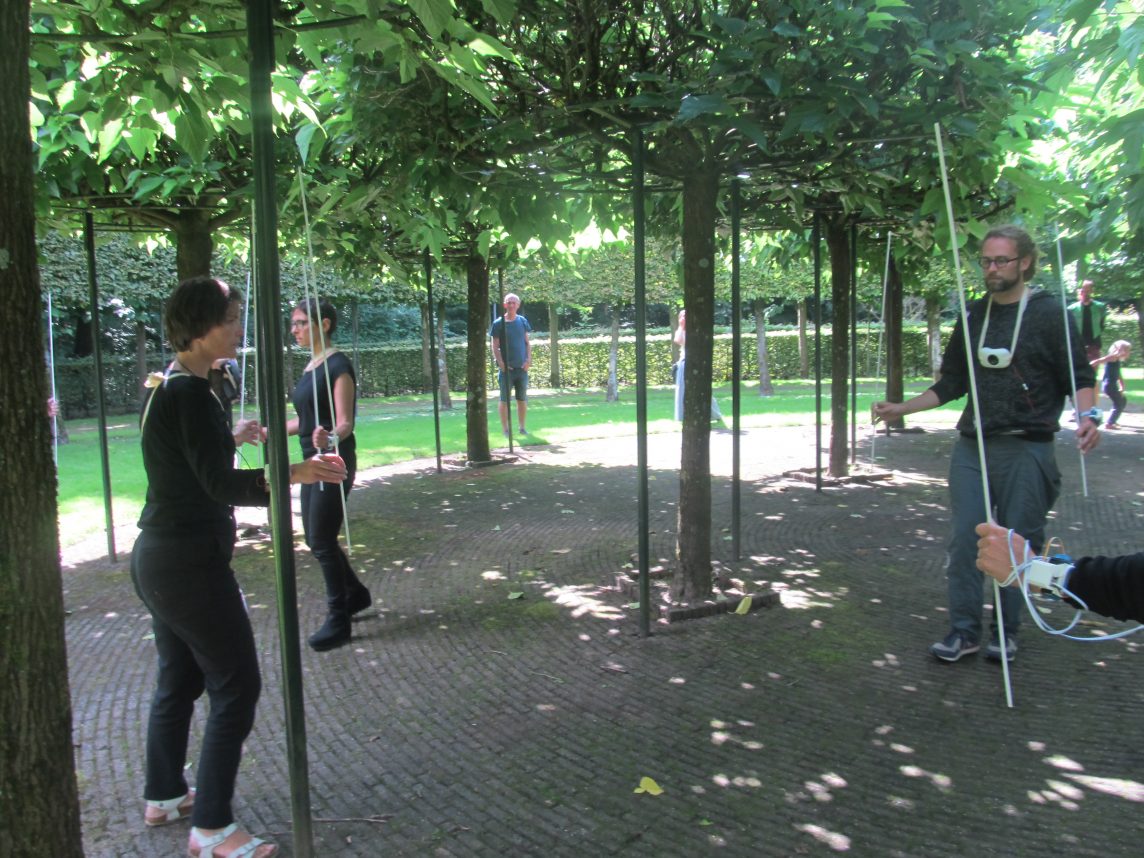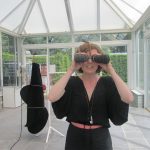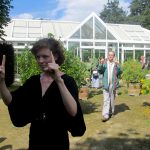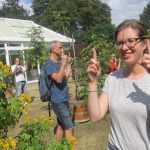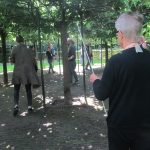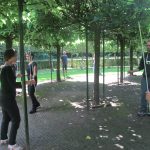In a workshop at Zone2source, which was arranged as part of the finissage weekend of our exhibition “What is it like to be a bat”, we hosted a collective knowledge-sharing session, as well as brainstorming and performing a collective work with the system. In this workshop we had a mix of artists from various fields. The first day we discussed the piece in the setting of our exhibition in the Orangerie in Amstelpark. In this colonial context we explored the political potentials of the work, specifically the ideas derived from several of our sources of artistic inspiration, namely the architects Arakawa & Gins, and the artists Lygia Clark, Rebecca Horn and Helio Oiticica. How we sense naturally have political implications: The gaze, but also hierarchy of attention, of the senses and the speed and care with which we focus our attention. We talked about the wearable devices (not only the GSR sensing sound organelles but also the Wind Periscope, the Barometric Pressure Harness and the Peripheral Vision Goggles) exhibited in the show, as tools for disrupting biologically and culturally preconditioned modes of perception, and the political premises of working on this plasticity of the body. We decided to zoom in on the disruption of the vision (the linear gaze or the ‘fate line’ as it’s known in rifle shooting) of the Peripheral Vision Goggles.
We can all train our peripheral vision by holding out our fingers, focusing not on the person before us, but on the dancing movements of the surrounding landscapes, of the colours and shades, shapes and sounds around us. Together with the participants we created a choreography from this technique. The simple rule was to activate our peripheral vision by holding two white sticks at the periphery of each eye, and trying to lock two of the other performers at each periphery. The site of the performance was an area just outside of the Orangerie, which has a very systematic tree plantation. This created a kind of flocking choreographic system of each of us constantly trying to fit each other within our two sticks. The choreography was sonified again through the GSR sensing sound organelles, which were each equipped with a kind of white noise, that added to this ‘scanning’ feel of the bodies moving in flock. At the end of the performance we implemented the gesture of the neuroscientist that we met in Berlin of each performer handing over their organelle to one of the audience members that were standing in a circle around the performers.
